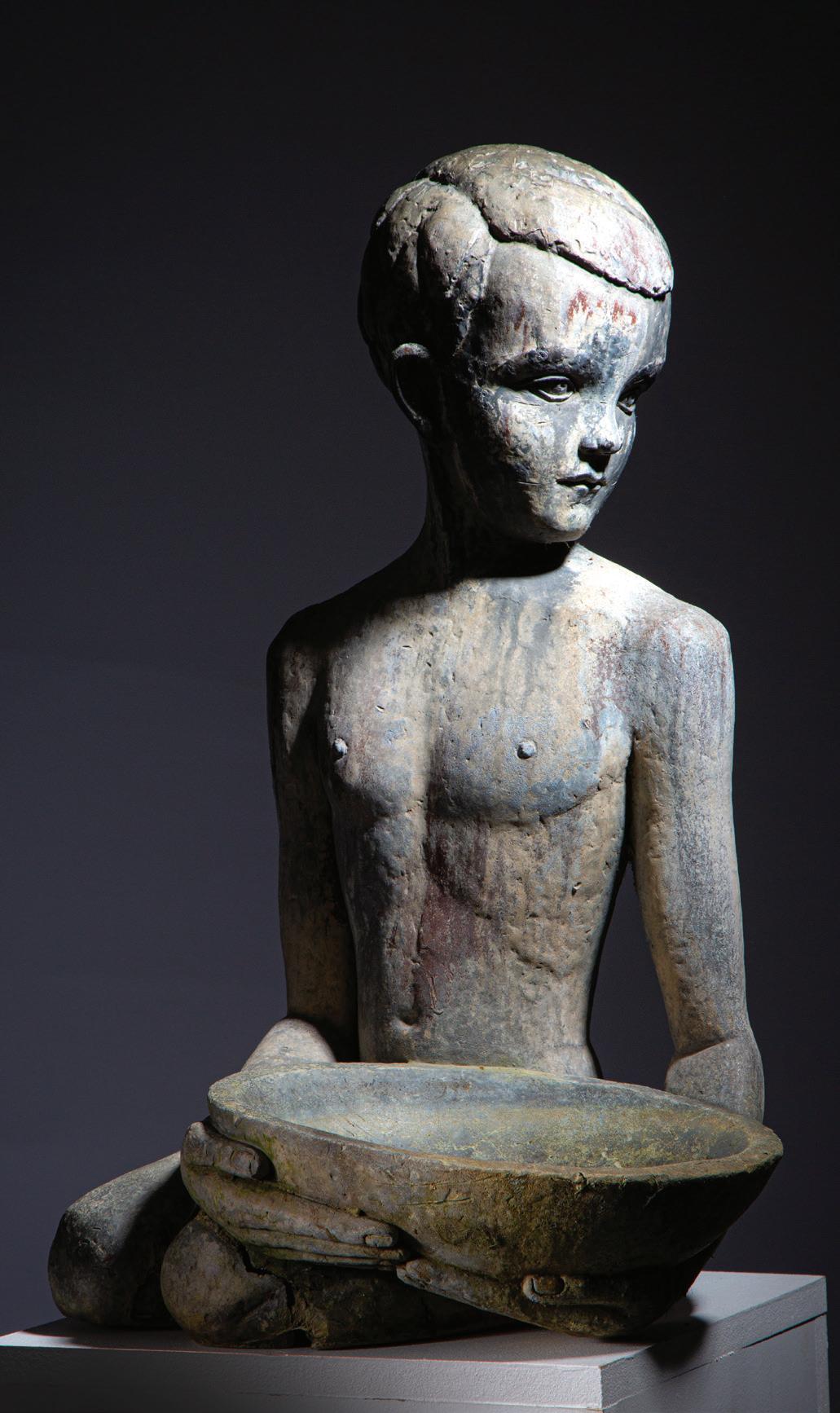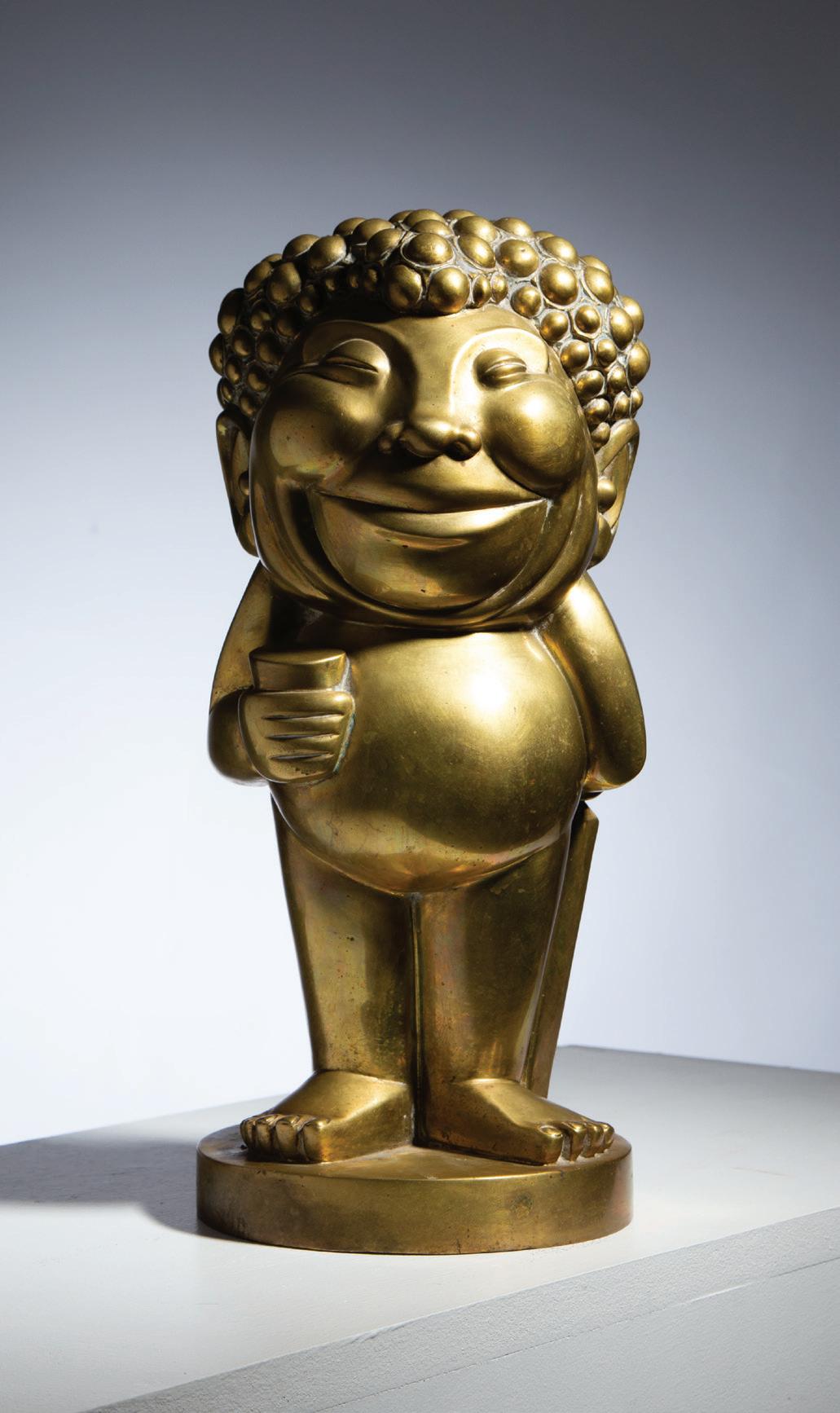
1 minute read
MODERN BRITISH & 20TH CENTURY ART
Eric Kennington (1888–1960) has been described as ‘one of the most distinctive, intriguing, gifted and thought-provoking’ British sculptors of the early twentieth century. However, he was also a superb portraitist, and his powerful depictions of soldiers in pencil and pastel place him amongst the leading draughtsmen of his generation. Our June sale features over thirty works consigned by the artist’s family, and the group reflects Kennington’s diverse artistic talents, as well as providing numerous insights into the personal life of this notably self-effacing and private man.
Bacchus (below left), is one of Kennington’s early sculptures, and provides an interesting counterpoint to the carved stone works that would come to dominate his oeuvre. During this period he lived in Chiswick facing the River Thames, and this work was intended to serve as a table ornament on the barge owned by his friend the writer A. P. Herbert (1890–1971). Modelled in clay and cast in brass, the work’s highly polished surface anticipates the smooth finish that are characteristic of most of Kennington’s later sculptures.
Advertisement
Below left: Eric Kennington RA (1888–1960)
Bacchus
Brass, c.1922–24

34 x 17 x 17.5cm
Estimate £5,000–7,000
Below right: Eric Kennington RA (1888–1960)
Portrait of Christopher Kennington, the artist’s son, holding a dish
Lead
59 x 34.5 x 36.5cm
Estimate £3,000–5000
Above:
Eric Kennington RA (1888–1960)
Portrait of T. E. Lawrence, ‘Lawrence of Arabia’ (1888–1935)

Signed Eric H Kennington (to label)
Collotype, artist’s proof, number 8 of 100
48.2 x 38.2cm
Estimate £800–1,200
Right:
Thomas Benjamin Kennington (1856–1916)
Portrait of Eric Kennington as a boy, full-length wearing a brown suit

Signed and dated TB Kennington ’96 (lower right)
Oil on canvas
127.3 x 96.8cm
Estimate £6,000–8,000
One of Kennington’s favourite subjects was his children, Christopher and Catherine, whom he described as ‘gifts from God’. He seemed fascinated in particular with Christopher’s personal and physical development, and the still composure seen in the lead portrait offered here (opposite), contrasts with the earlier sculptures of him as a writhing infant. Depictions of the family are naturally a key part of a collection such as this, and there are also several works by Eric’s father, Thomas Benjamin Kennington (1856–1916), himself a successful portrait and genre painter. The sale features portraits by both artists of the other (above right).
Other aspects of Kennington’s diverse career that are encompassed by the collection are his formative visit to Russia in 1905, and his friendship with T. E. Lawrence (Lawrence of Arabia), through his illustrations for the latter’s Seven Pillars of Wisdom (above left). As a whole, the collection provides a rare insight into the life and career of one of the most talented artists working in early 20th-century Britain.










